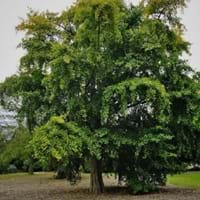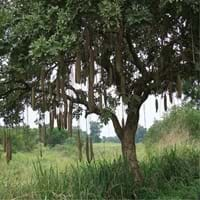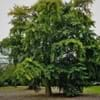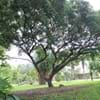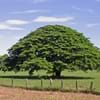Life Span
Perennial
Perennial
Origin
China
Eastern Africa, Middle Africa
Types
Not Available
Not Available
Habitat
Deciduous forests, Wild, Woods
Riverine forest, wooded grassland
USDA Hardiness Zone
4-9
9-12
Sunset Zone
A3, 1a, 1b, 2a, 2b, 3a, 3b, 4, 5, 6, 7, 8, 9, 10, 12, 14, 15, 16, 17, 18, 19, 20, 21, 22, 23, 24
H1, H2, 12, 13, 19, 20, 21, 22, 23, 24
Habit
Upright/Erect
Arching/Fountain-shaped
Flower Color
Yellow green
Dark Red, Tan
Flower Color Modifier
Bicolor
Bicolor
Fruit Color
Orange, Light Yellow, Tan
Tan
Leaf Color in Spring
Light Green, Yellow green
Green, Dark Green
Leaf Color in Summer
Green, Yellow green
Green, Dark Green
Leaf Color in Fall
Yellow, Gold
Green, Dark Green
Leaf Color in Winter
Not Available
Not Available
Leaf Shape
Bi-lobed
Pinnate
Plant Season
Spring, Summer, Fall, Winter
Spring, Summer, Fall, Winter
Sunlight
Full Sun
Full Sun
Type of Soil
Clay, Loam, Sand
Loam, Sand
The pH of Soil
Acidic, Neutral
Acidic, Neutral, Alkaline
Soil Drainage
Well drained
Average
Bloom Time
Spring
Indeterminate
Tolerances
Pollution, Drought, Salt, Soil Compaction
Drought, Salt
Where to Plant?
Ground
Ground
How to Plant?
Seedlings, Spores, Stem Planting
Seedlings
Plant Maintenance
Medium
Medium
Watering Requirements
Requires watering in the growing season
Needs a lot of water initially
In Summer
Lots of watering
Lots of watering
In Spring
Moderate
Moderate
In Winter
Average Water
Average Water
Soil pH
Acidic, Neutral
Acidic, Neutral, Alkaline
Soil Type
Clay, Loam, Sand
Loam, Sand
Soil Drainage Capacity
Well drained
Average
Sun Exposure
Full Sun
Full Sun
Pruning
Remove damaged leaves, Remove dead branches, Remove dead leaves
Remove damaged leaves, Remove dead branches, Remove dead leaves
Fertilizers
All-Purpose Liquid Fertilizer
Balanced liquid fertilizer monthly
Pests and Diseases
Red blotch
Leaf spot, Mealybugs, Rust
Plant Tolerance
Drought
Drought
Flowers
Insignificant
Showy
Flower Petal Number
Single
Single
Foliage Texture
Medium
Coarse
Foliage Sheen
Matte
Glossy
Attracts
Birds, Butterflies, Squirrels
Bees, Birds, Butterflies, Not Available
Allergy
Abdominal pain, Nausea, Throat itching, Vomiting
Poisonous when unripe
Aesthetic Uses
Bonsai
Not Used For Aesthetic Purpose
Beauty Benefits
Acne, For treating wrinkles, Remove blemishes
Acne, Slow downs aging
Environmental Uses
Air purification, Nesting sites for birds, Shadow Tree, soil erosion prevension on hill slopes
Air purification
Medicinal Uses
Aging, Alzheimer’s Disease, anti-allergy, anti-inflammatory, Blood anti-coagulant, Diabetes
Gynaecological, Malaria, STDs
Part of Plant Used
Bark, Leaves, Seeds
Dried seeds, Leaves
Other Uses
Can be made into a herbal tea, Condiment, Cosmetics, Medicinal oil
Used to flavour beer, Used to produce a red dye
Used As Indoor Plant
Sometimes
No
Used As Outdoor Plant
Yes
Yes
Garden Design
Feature Plant, Shade Trees, Street Trees
Feature Plant, Shade Trees, Tropical
Botanical Name
GINKGO biloba 'Chi-chi'
KIGELIA africana
Common Name
Ginkgo
Sausage Tree
In Hindi
बालकुवारी
Sausage Tree
In German
Tempelbaum, Ginkgobaum
Sausage Tree
In French
Arbre sacré des temples d'Asie, Arbre aux mille écus
saucisse Arbre
In Spanish
Gingo, Árbol de oro
Árbol de salchicha
In Greek
Γιγκο, Γκίνγκο
λουκάνικο δέντρο
In Portuguese
Nogueira-do-Japão
Árvore de salsicha
In Polish
Miłorząb chiński, Miłorząb dwudzielny
kiełbasa Drzewo
In Latin
Gingko
farciminis ligno
Phylum
Ginkgophyta
Magnoliophyta
Class
Ginkgoopsida
Magnoliopsida
Order
Ginkgoales
Lamiales
Family
Ginkgoaceae
Bignoniaceae
Clade
Cycad
Angiosperms, Asterids, Eudicots
Tribe
Not Available
Tecomeae
Subfamily
Not Available
Not Available
Number of Species
Not Available
Not Available
Season and Care of Ginkgo and Sausage Tree
Season and care of Ginkgo and Sausage Tree is important to know. While considering everything about Ginkgo and Sausage Tree Care, growing season is an essential factor. Ginkgo season is Spring, Summer, Fall and Winter and Sausage Tree season is Spring, Summer, Fall and Winter. The type of soil for Ginkgo is Clay, Loam, Sand and for Sausage Tree is Loam, Sand while the PH of soil for Ginkgo is Acidic, Neutral and for Sausage Tree is Acidic, Neutral, Alkaline.
Ginkgo and Sausage Tree Physical Information
Ginkgo and Sausage Tree physical information is very important for comparison. Ginkgo height is 460.00 cm and width 240.00 cm whereas Sausage Tree height is 1,220.00 cm and width 910.00 cm. The color specification of Ginkgo and Sausage Tree are as follows:
Ginkgo flower color: Yellow green
Ginkgo leaf color: Light Green and Yellow green
Sausage Tree flower color: Dark Red and Tan
- Sausage Tree leaf color: Green and Dark Green
Care of Ginkgo and Sausage Tree
Care of Ginkgo and Sausage Tree include pruning, fertilizers, watering etc. Ginkgo pruning is done Remove damaged leaves, Remove dead branches and Remove dead leaves and Sausage Tree pruning is done Remove damaged leaves, Remove dead branches and Remove dead leaves. In summer Ginkgo needs Lots of watering and in winter, it needs Average Water. Whereas, in summer Sausage Tree needs Lots of watering and in winter, it needs Average Water.
